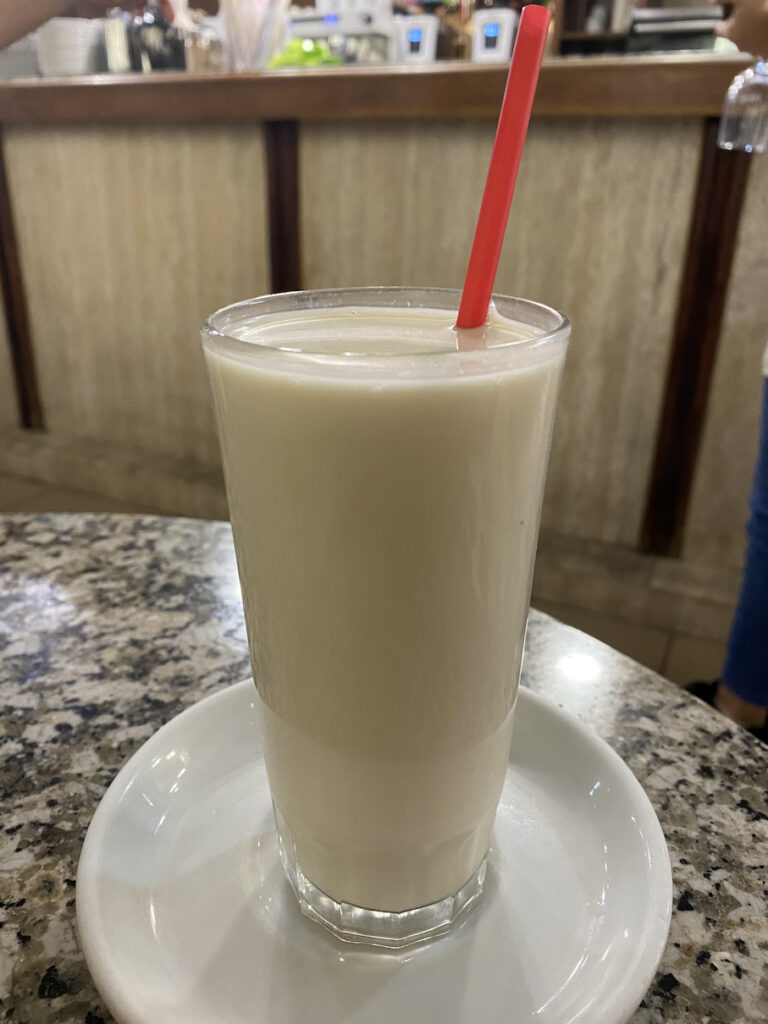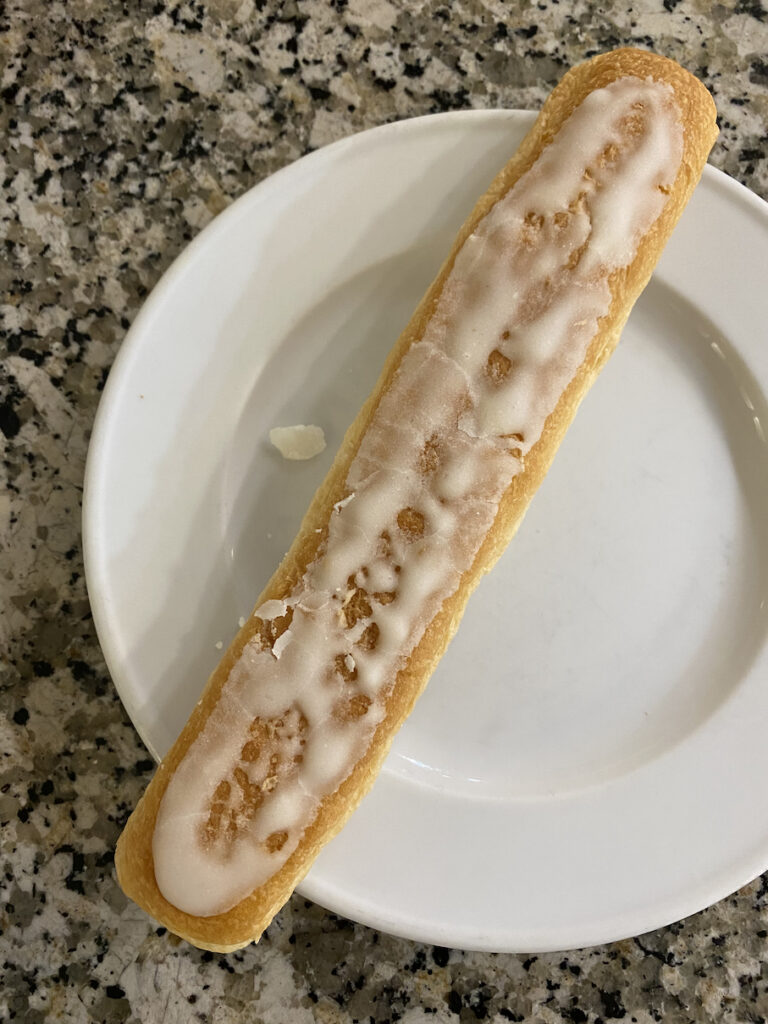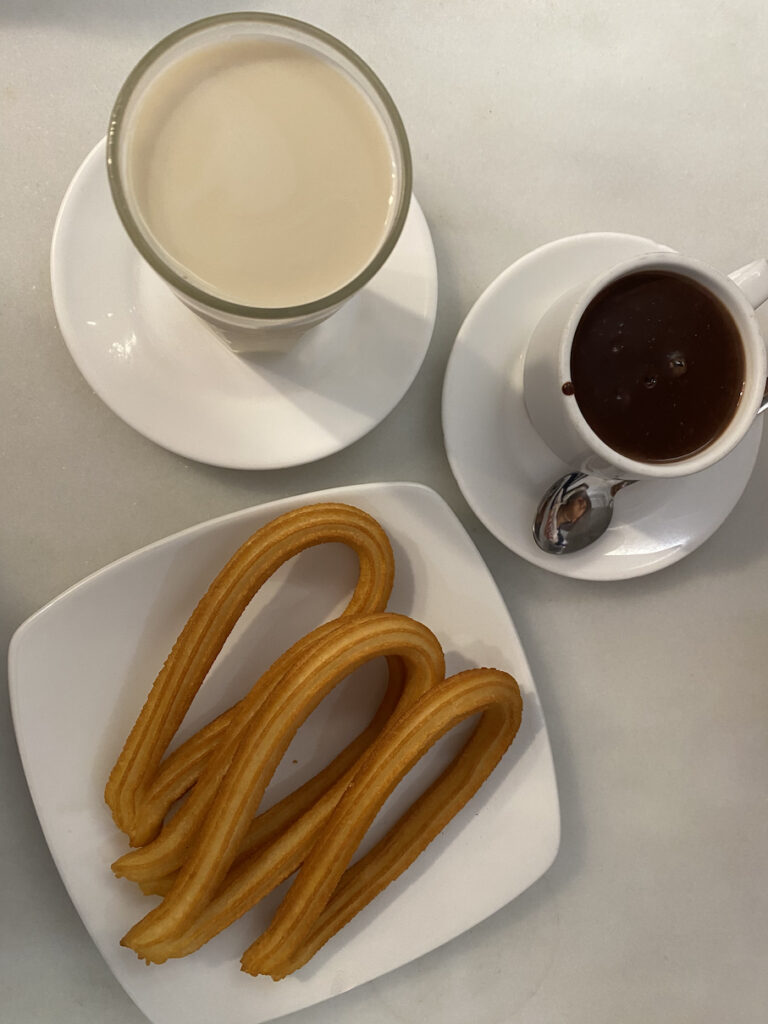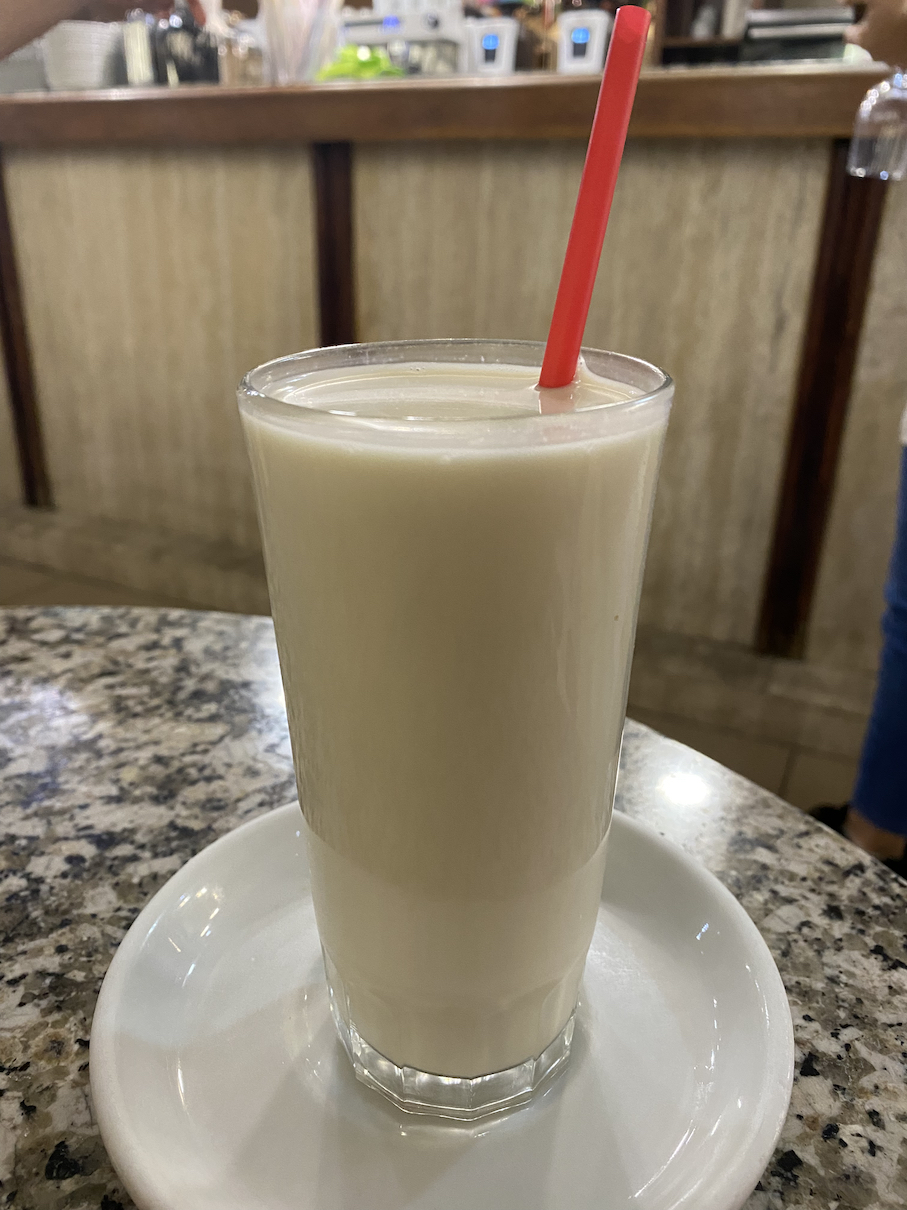You haven’t had the full Valencian experience until you’ve sipped (or chugged) horchata in Valencia. That’s because this city isn’t just the birthplace of paella – this creamy, naturally sweet, delicious drink was born here too. Specifically in the Alboraya region of Valencia.
And this refreshing, plant-based beverage has remained popular for centuries. So it’s no overstatement when we say that when it comes to iconic Valencian drinks, horchata de chufa reigns supreme.

It’s a summertime favorite but let’s be real – Spain has 320 sunny days a year. Horchata has year-round appeal.
So it doesn’t matter what time of the year you’re visiting Valencia, horchata is going to happen.
You’re definitely going to have some. But not just any old horchata – you’re going to have the best. So here’s what you need to know.
A little history never hurts…
I know I just said that horchata de chufa originated in Valencia. But these traditional foods and drinks are tricky. They have roots – deep roots that stretch much further. Specifically to ancient Egypt. Archaeologists have discovered evidence that Egyptians were cultivating and using chufas (tiger nuts) over 4,000 years ago. Being as clever as they were, they were using it for its medicinal and nutritional benefits.
So how did it make its way to Spain and go on to become a national icon?
We can thanks the Moors, who introduced the crop to Spain during their occupation in the Middle Ages. Once the chufas met the Mediterranean climate and Valencia’s fertile soil, the rest was history and the horchata as we know it today was born.
The Spaniards, of course, did what they do best – make things taste good. And soon perfected the art of making this sweet, milky-with-no-milk drink. By the 13th century, horchata had become a popular drink in Valencia.
Where’s the best horchata in Valencia?
Listen. Valencia has no shortage of places to enjoy freshly-made, top-of-the-line horchata. But there are a couple places that are a grade above the others. Here are my personal favorites.
Horchatería Santa Catalina
Everyone has been to Valencia knows why this cafe is on this list. It’s an iconic establishment. Located in the heart of the city near the Plaza de la Reina, it has been serving horchata for over a century. It may just be the oldest orxateria in town.
Be warned: it’s small and it gets busy. Everyone wants horchata! But the elegant, tiled interior and village feel all translates to a cozy, picturesque experience. It may be touristy, but it’s still one of my favorite places to sit, sip a horchata and momentarily forget that it’s 2024.
Order a side of fartons to dip in – the usual, traditional kind or the flaky kind. Santa Catalina even has the flaky kind stuffed with creme or chocolate. Both are excellent.
Casa Orxata
A mainstay since the opening of the Mercado de Colón, this horchateria is for the health-conscious. Their horchata is made from 100% organic and Valencia-grown tiger nuts and they serve it unsweetened – with organic sugar that you can add to get to the sweetness you want.
If you love horchata but always find it a tad too sweet – this is the place for you.
Horchatería El Siglo
Another popular spot near the historic center, El Siglo has been making horchata since 1836. With a variety of traditional sweets and fartons on offer, this café is perfect for a mid-day horchata break after exploring Valencia’s old town.
Horchatería Daniel
Located in Alboraya, the heart of chufa country, Horchatería Daniel is a local institution. This family-run café is renowned for its rich and creamy horchata and offers a truly authentic Valencian experience. It’s a must-visit for any horchata enthusiast.
Món Orxata
Wherever you roam in the city of Valencia, you’ll never be too far from a Món Orxata street cart, serving freshly-made horchata for people on the go.
And it’s good horchata, too. The chufas they use are Valencian-grown, organic, unpasteurized and very fresh. It’s also kept cool in steel vats surrounded by ice so it’s the perfect refreshment on hot summer days when you’ve been walking endlessly through Valencia’s beautiful streets.
What horchata should I get?
Because when it comes to horchata in Valencia, there are options. There’s regular horchata. There’s the slushy version (granizada). There’s chufa ice cream, which is the gelato version.
Which do you go with? Honestly, try them all.
Let’s just go over a few ground rules:
- When you can, choose natural and unpasteurized horchata, made from chufa de Alboraya.
- When you can, get horchata from a horchateria (aka orxateria).
- If you must, there is horchata at supermarkets but they are pasteurized and very sweet – this is a last ditch option.
- If you want to cut down on the sugar, a couple horchaterias offer sugar-free options. You can also find it at natural goods shops – ask for “bebida de chufa” (“sin azúcar”).
What to have horchata with?
Horchata is great on its own. But everything is better with friends. The things that play the best with horchata? Here’s the list.

Fartons: This is the most classic pairing. These soft, fluffy, slightly sweet pastries are made for dipping into horchata – the elongated shape fits perfectly in the glass and the bread will soak up the creamy richness without disintegrating.
Coca de llanda: These spongy traditional cakes are not too sweet. They’re light, moist and usually flavored with a bit of orange zest. It’s a simple but satisfying snack to have with a glass of horchata.
Churros con chocolate: Because, let’s be honest, if you’re at a horchateria sipping horchata – why wouldn’t you get a side of churros and chocolate?

Ensaimadas: These fluffy, spiral-shaped breakfast pastries are probably my favorite thing to pair with a horchata. It offers more than sweetness – it has a slightly yeasty flavor (it’s made with sourdough starter) and there’s a hint of savory from lard. It’s usually finished with a light dusting of powdered sugar. Altogether, it’s a unique flavor that pairs well with the nutty goodness of horchata.
Rosquilletas: Don’t like too much sweetness? Try a horchata paired with these crunchy breadsticks, they provide a savory contrast to the sweet drink.
The more you know, the better it gets
Sipping an ice-cold horchata on a hot Spanish day is a good time. But you know what would make it better? Knowing these little horchata facts.
They’ll improve your horchata game. Plus, you can rattle them off to your companions at the next opportunity. People love that.
Your chance to have real horchata. Here’s the biggest reason why you must try horchata in Valencia. Because an authentic horchata must be made with chufa de alboraya, aka the tiger nuts that are cultivated in the region of Alboraya, just outside Valencia, for hundreds of years. This small area continues to be the primary source for all of Spain’s chufas. So this is as close to the source as you’ll get. As if you needed another reason to drink more of this stuff.
Spanish vs Mexican horchata. If you’re from the States, you’ve most likely already tried horchata. But it’s most likely Mexican horchata. Which is absolutely delicious, mind you, but it’s not the same. The Mexican drink is made from rice and often flavored with cinnamon. Valencian horchata is completely different, made solely from chufas and water, making it nuttier and creamier in texture.
Nut allergies? Don’t worry. Despite their name, chufas aren’t nuts at all; they’re small tubers that grow underground. So even if you have a nut allergy, you’re good – these aren’t nuts at all.
They’re good for you. Horchata is naturally lactose-free, gluten-free, vegan and rich in nutrients. It’s high in fiber, potassium, and Vitamin E, making it a healthy choice. Historically, it was even thought to have medicinal properties, being used to treat fevers and stomach ailments.
Want to make your own horchata in Valencia?
If you want a deeper dive into the world of horchata, you’ve got options. Here are a couple experiences you can make a day out of…
Món Orxata’s Tigernut Tours
Món Orxata offers a “tigernut tour” where they open kimono their entire process of cultivating tigernuts and making horchata. You get to visit their organic tigernut fields as well as the artisan orxata factory.
You’ll also get some insight into the history of these street pushcarts which have been ladling horchata to thousands of thirsty passersby for 400 years. And, of course, you have a tasting!
Horchata Bike Tours
Want something a bit more active than informational? You can breeze through the farmlands of Valencia where chufas are grown. And then stop at a famous horchateria to reward yourself for your hard work.
Horchata Tasting Experience
This is much more comprehensive. you’ll get to try a bevy of delicious local foods on top of the horchata that you’ll definitely get.
And there you have it – everything you need to know to fully enjoy the horchata experience in Valencia. Now go forth and sip.
